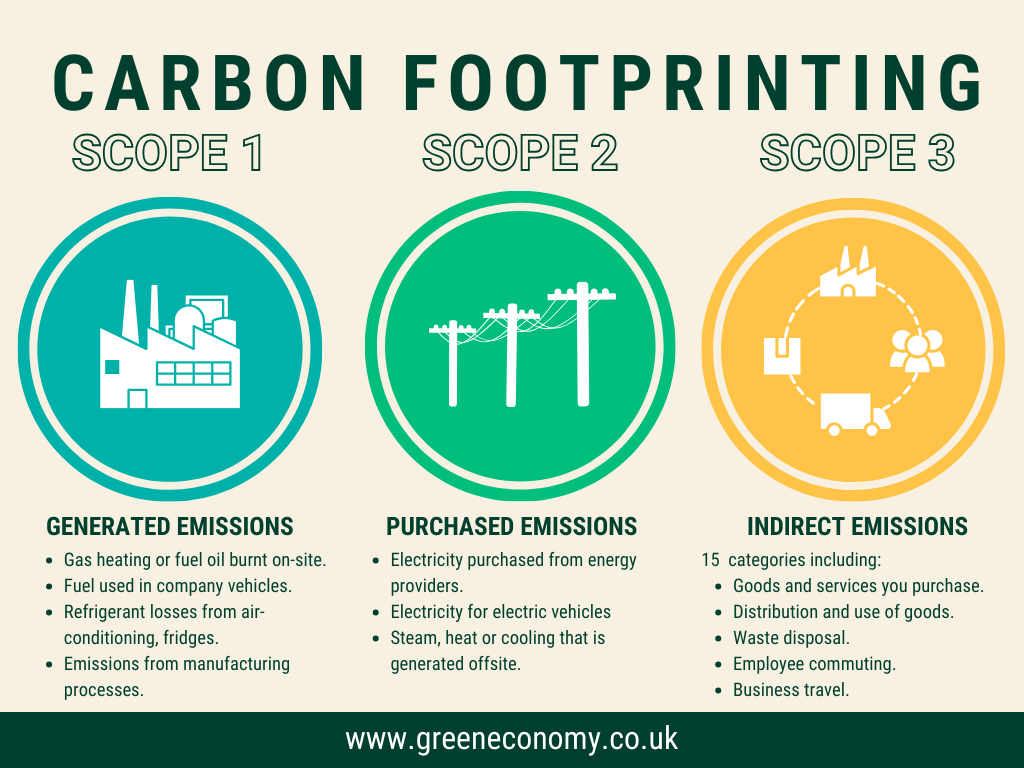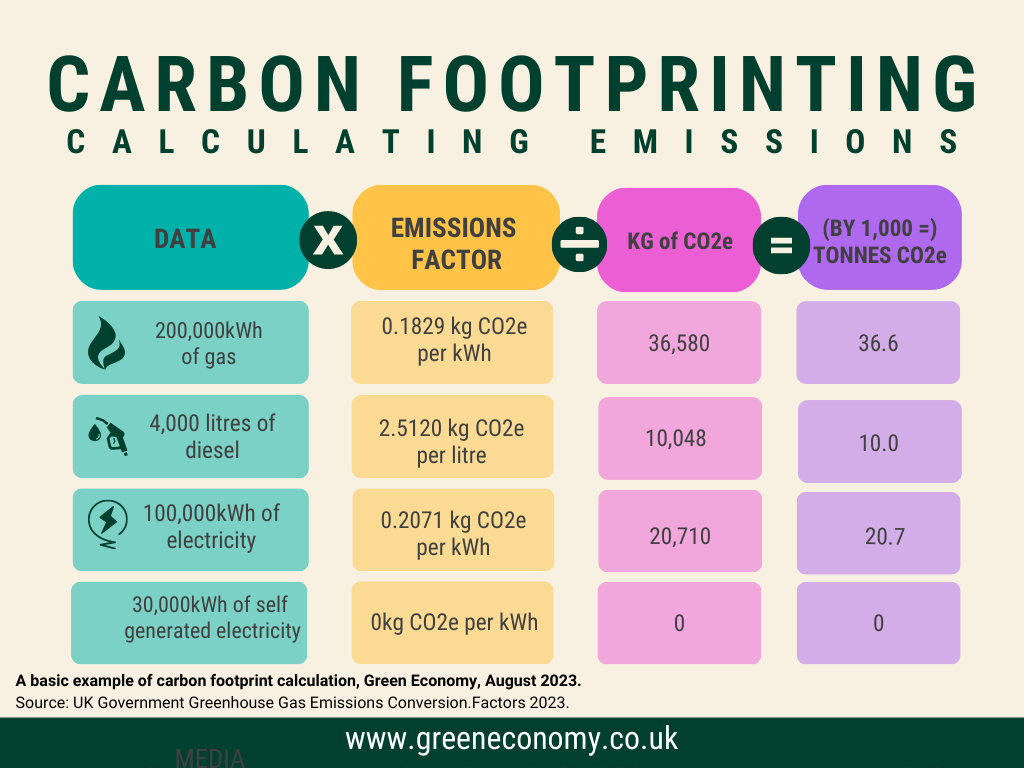
A business guide to ‘Scope 3’ emissions
Read time: 6 minutes
The need to understand your greenhouse gas emissions is of increasing importance for even the smallest of businesses.
By measuring your carbon footprint, you will not only better understand the impact of your business on the climate but also identify opportunities to improve efficiency and put yourself in an excellent position to win future work.
An organisation’s total carbon footprint can be split into three scopes:
The carbon footprints reported by most businesses traditionally cover Scopes 1 and 2. This is because these are the emissions you have the most control over, and they can generally be calculated using easily obtainable data.
As a business measuring your carbon footprint for the first time, Scopes 1 and 2 will provide a good overview of your direct climate impact.
Things get more complex when it comes to Scope 3, as the diagram below shows, as it accounts for your full value chain.


A manufacturing firm, for example, would include the entire lifecycle of the product – from the extraction, production, and transportation of raw materials to the finished product’s transportation to the customer, its use, and its disposal.
For other sectors, this will require analysis up and down your supply chain – upstream – the products and services that you buy, and downstream – the products and services that you sell and their onward lifecycle. It also includes other indirect emissions you’re responsible for, such as business travel and commuting.
Put simply, your Scope 3 emissions consist of the Scope 1 and 2 emissions of all the other organisations and individuals in your wider value chain.
Understandably, many of these sources are incredibly difficult to identify, let alone measure, especially for smaller businesses. So why attempt to measure your Scope 3 at all?
For starters, those emissions stack up. It’s likely that your total Scope 3 footprint is actually larger than your Scope 1 and 2 footprints combined. In fact, the carbon footprint of the average supply chain is understood to be more than 11 times higher than a buyer’s direct operations. Manufacturers generate a lot of indirect emissions from the raw materials they use and the lifecycle of their products, while office-based businesses tend to have high emissions from business travel and commuting relative to their own operations.
With that in mind, Scope 3 has become a big focus point for large businesses that are under the most pressure to reduce their impact on the climate. For many companies, Scope 1 and 2 alone are no longer enough to satisfy stakeholders. Under the UN definition, a net zero target must cover Scope 3 emissions “where material to total emissions and where data availability allows”.
In addition, the more you know about your Scope 3 emissions, the better your understanding of your upstream and downstream activities. For example, it may help you identify and manage an unseen risk in your supply chain or reveal that your waste generation is actually a much bigger priority than you may have thought.
In total, there are 15 (8 upstream and 7 downstream) Scope 3 emissions sources laid out under the Greenhouse Gas Protocol, the internationally recognised standard for carbon footprinting. These include:
Some of the above will be more relevant to your business than others. But even so, it’s still quite a lot to take in. The good news is you don’t need to take on all of Scope 3 in one jump. That’s a difficult piece of work for even the largest of organisations. SMEs can generally focus on a smaller subset tailored to the data they have available and/or the activities that represent the most significant or controllable proportion of their emissions.


The first step is to collect the data. Some examples of core Scope 3 sources that can be measured (or at least approximated) relatively easily in-house are as follows:
While far from exhaustive, calculating the above is a great start to understanding your Scope 3 emissions. Business travel is often the key category that is mandatory for many standards and formal commitments. The UK’s SME Climate Commitment, which allows SMEs to become signatories to the globally recognised UN Race to Zero initiative, requires that you measure your Scope 1 and 2 emissions plus the business travel element of Scope 3 as a minimum.
If you’re ready to make a start, you can read more detail about each of the fifteen Scope 3 categories – including the specific data you need to collect – in the GHG Protocol’s Scope 3 guidance.
Green Economy provides support to help you on your carbon reduction journey. Our specialist advisors can audit your business, provide advice and support on data collection, and guide you through your carbon footprint calculation.